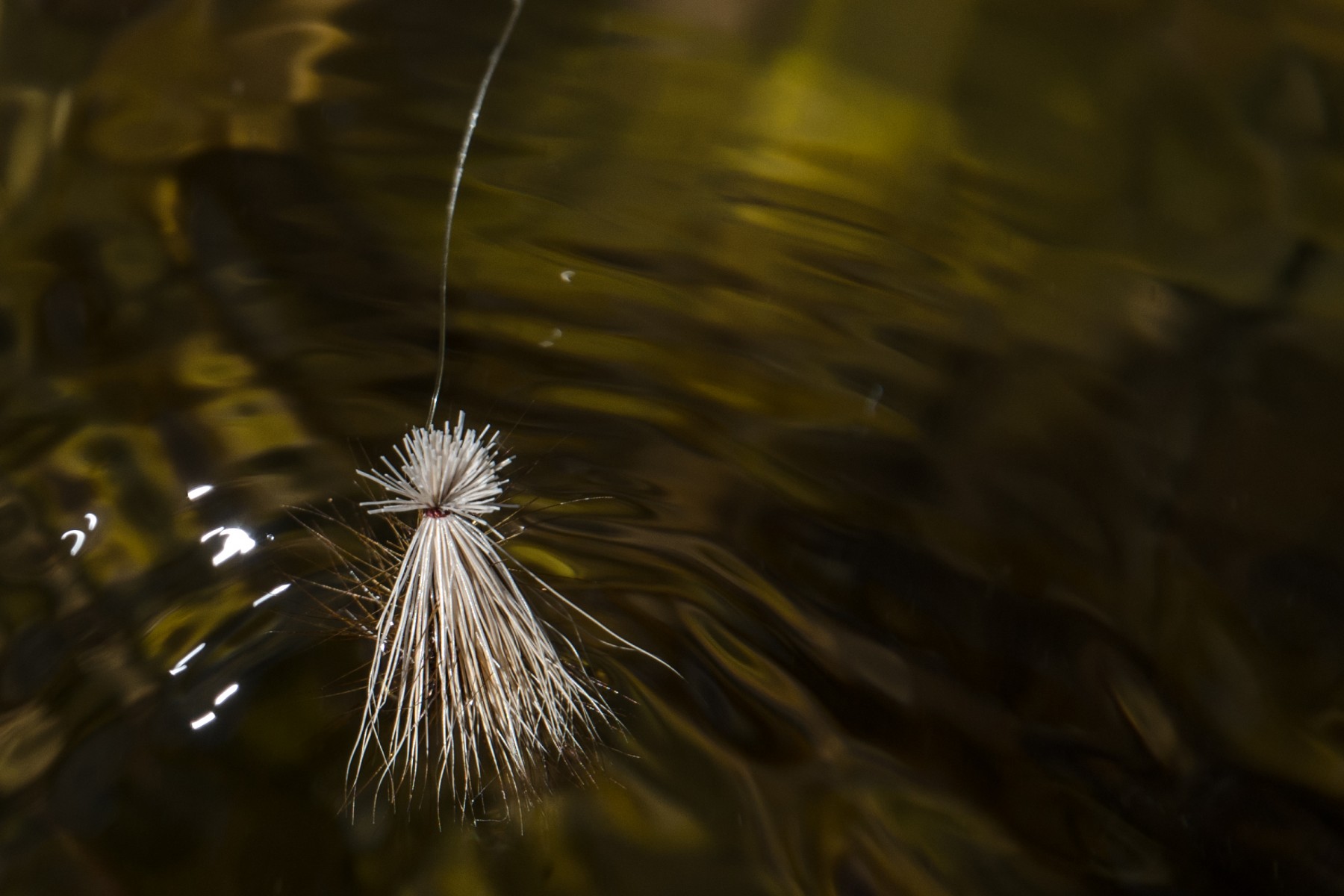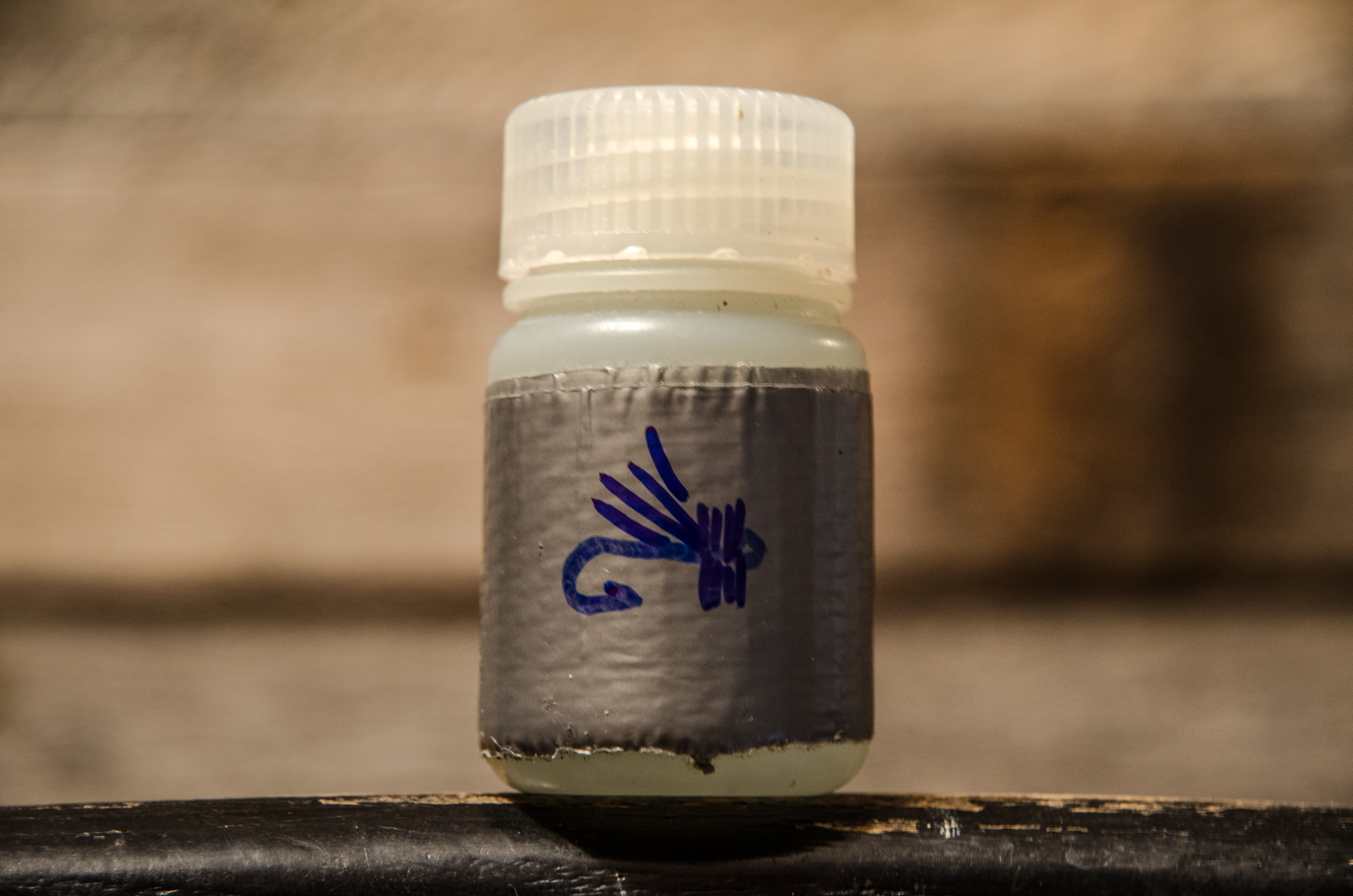DIY Fly Floatant

A strong do it yourself current runs through the fly fishing community. It’s powerful enough to pull a decidedly unhandy Andy like myself into tying my own flies and building my own leaders. The more talented among us even build their own rods, boats and landing-nets. The technology and engineering required of much modern gear provides a firm backstop to the madness though. Waterproof breathable waders and carbon fiber oars, for example, are beyond even the most ambitious hobbiest’s set-up, and who’s going to manufacture their own hemostats? I’d long assumed that high quality fly-floatant fit into this latter category, but I was wrong. Turns out you don’t have to be Walter White to cook up top-notch bug dope. But why bother? I have my reasons.
First, it’s cheap and easy. Sure a trusty bottle of gink will only set you back $5, but I bet most of you have everything needed to make floatant already kicking around the house. That’s five bucks you could spend on tying materials.
Second, this stuff works better than anything I’ve ever used. I realize I’m opening a serious gear debate can of worms with that statement, so I’ll admit right off that I’m no connoisseur. All I’m saying is that this magic potion will keep your bug higher than a Colorado poet, all day long. It’ll even keep your fly-up and able to seduce after multiple poundings.
Third, next time you’re on the water you can casually offer your buddy a hit of your own personal, private label, secret sauce, dry fly elixir. Come on… how cool is that?
Here’s how to make fly floatant…
STS Outfitters’ Bug Juice
White Gas (aka Coleman fuel or Boy Scouts’ after shave)
Paraffin Wax (aka canning wax or unscented candle wax)
Small Jar (8 oz or less) with tight-fitting lid
Mini Jar for use on the water. These work great.
Step 1: Shave 10 grams of wax (about a ¾ inch cube) into thin flakes and place in jar. Add ½ cup white gas. Cover with tight fitting lid and shake it like it owes you money until wax is mostly or completely dissolved.
Step 2: Shave in more wax, cover and keep shaking.
Step 3: Repeat Step 2 until no more wax will dissolve. Let solution sit over night.
Step 4: Shake one last time and decant into your streamside floatant container.
Step 5: To apply, dunk your fly in the solution, remove and allow 5 minutes to cure. Bugs can also be pre-treated before heading out.
Step 6: Catch and release ‘til the cows come home.



ok – possible cheap shot about the Colorado poet. I’m sure you are talking about the poets who climb the fourteeners here?
Naturally. Colorado is renown for its altitude. Whatever else could I be reeferring to?
That all natural Rocky Mountain high?
Exactly. 14ers everyone!
Thanks for the instructions. I do a combination desiccant-hydrophobic powder combo from a recipe concocted by our TU State Chair and I mix big amounts placed in many small bottles to distribute to our Project Healing Waters vets and PHW volunteer guides and to sell to our members and to use in our drawings at meetings. The custom combo works better than either the hydrophobic powder alone or desiccant alone in the manner they are sold commercially (at pretty high prices). Maybe I can do homemade bug juice as well.
Next we will be making the sinking fluid for emergers…
Thanks for the tip Ralph. I’ll have to give that a try. So you’re putting the desiccant and hydrophobic powder in the same container and shaking once? Or are you using them sequentially? What flavors of desiccant and powder do you use?
The dessicant is Calcium Sulfate (CaSO4) available in bulk. The hydrophobic powder is also available in bulk. This is not sequential use. They are combined together and then placed in a small container for use on the stream. The combination takes advantage of the characteristics of dessicant (absorbing water from the fly) and hydrophobic powder (like Frog’s Fanny), which resists water. This is the brainchild of Mack Martin of the Atlanta Fly Fishing School, and it is pretty cool stuff.
Fantastic. Thanks!
Ralph – I’ve been looking for a hydrophobic powder option myself. If you don’t mind sharing what you use please let me know. Whatever you are using may be, non-polluting “green”; however, if not and you know of any plausible options… again please enlighten me. Thanks in advance for any insights on the topic – I greatly appreciate it.
Dustin
It is fumed silica/cabosil/ on ebay, or boatbuilding suppliers. Surprise to me, I have the stuff all over the place for boats. Not good to inhale it though, stand with your back to the breeze.
where can I buy white gas? I have never heard of it
I buy mine at the local hardware store. It comes in a big rectangular silver metal jug with red writing. Most camping / outdoor goods stores carry it too. It’s often called “coleman fuel” or “camp gas”. It’s most common use is in backpacking stoves (e.g. the MSR whisper light) and camping lanterns (e.g. the classic Coleman Camp Lantern).
Hope that helps